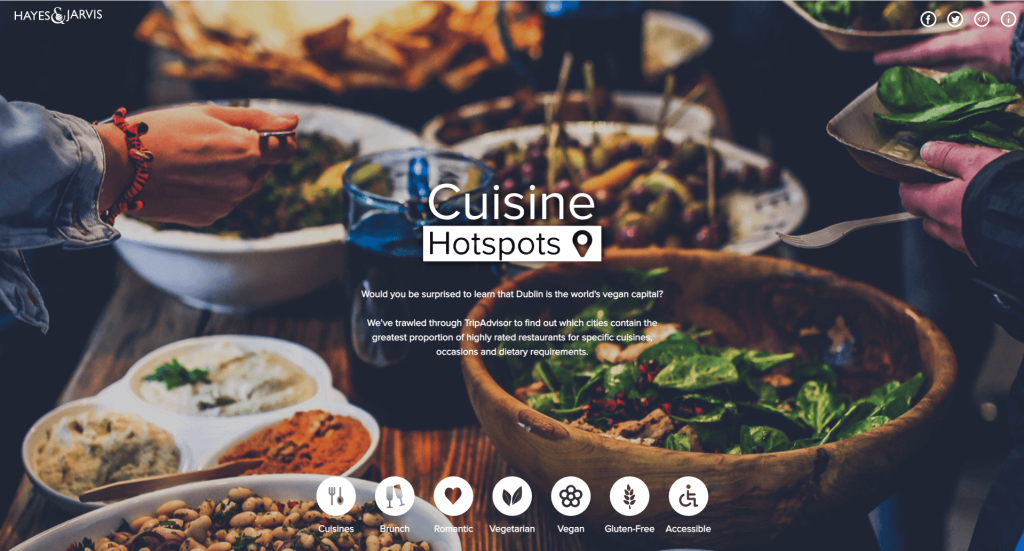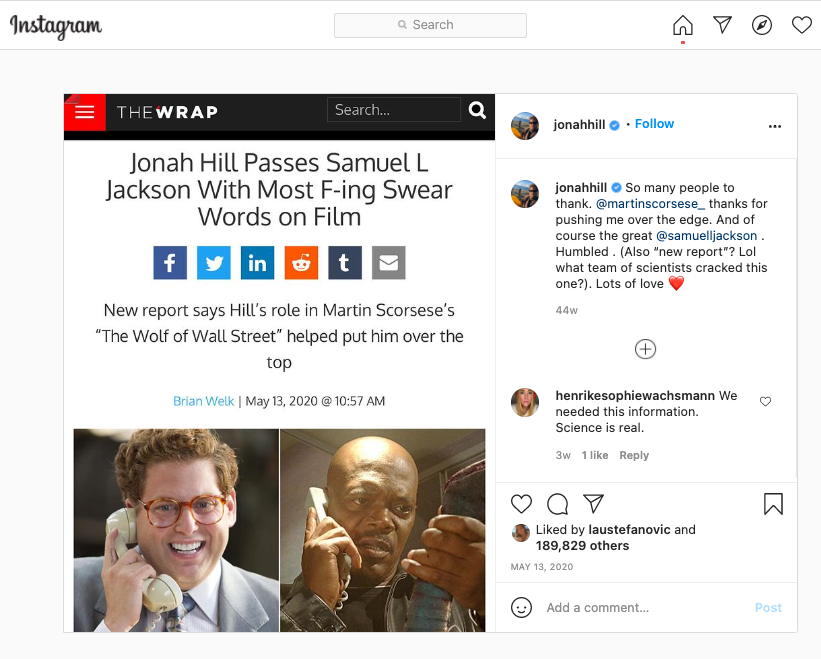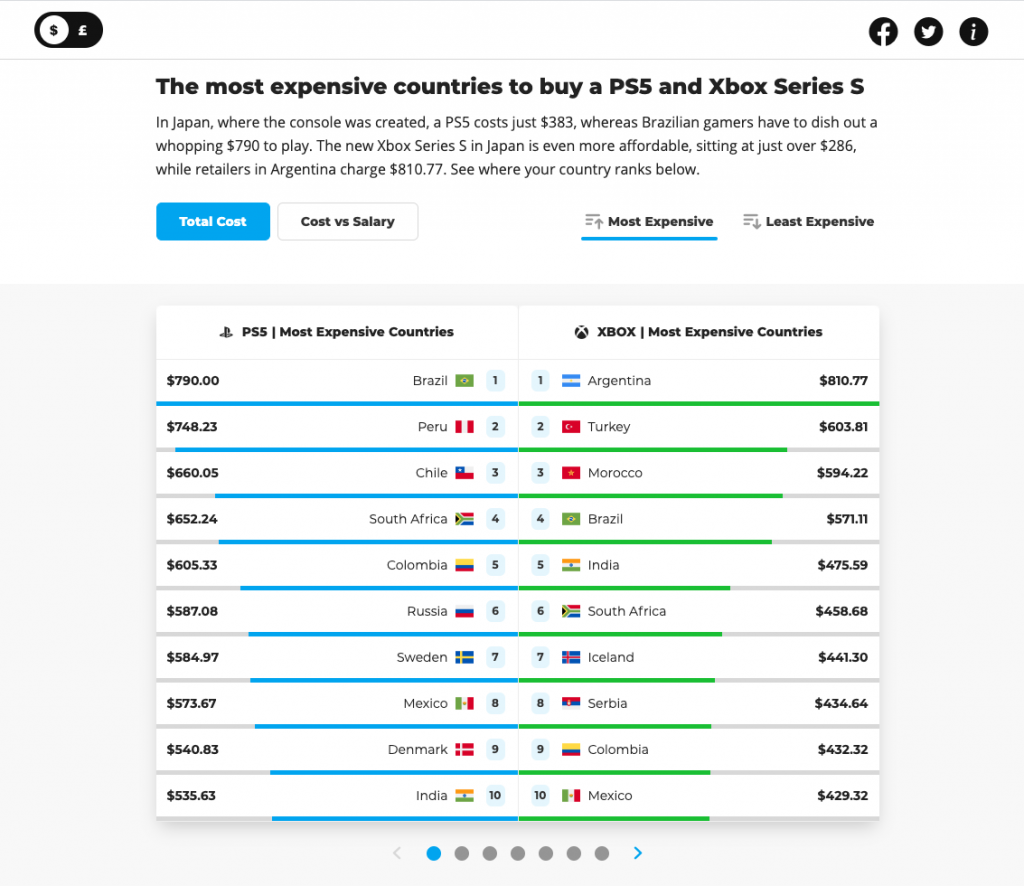After five years working as a journalist and more than a year working in digital PR and outreach, I have seen SEO in operation from both sides – here’s how they can be used in combination to secure coverage.
My background
When I first started doing my degree in Journalism at Kingston University in 2012, SEO was a mere afterthought in my Multimedia News Writing course. Yes, we were told to hyperlink or to include keywords in our copy, but we were never fully educated on its purpose or importance, nor did it ever dictate what we were writing about.
Eight years later, I was working for a publication where the content we produced was almost entirely driven by SEO strategies. It was prioritised on the same level as editorial integrity and quality, which I found surprising and intriguing. As much as I love writing, I felt myself being drawn to this ‘behind the scenes’ world of SEO more and more, to the point where I decided to pursue a career in it.
I started working at Verve Search nearly 18 months ago, where I was introduced to a whole new and more technical side of SEO. This, in combination with my journalistic experience and my knowledge of how SEO is applied in journalism, has really strengthened my ability in outreach. I want to share this knowledge so you can too.
So, how can we learn from the way journalists and publications use and are motivated by SEO as part of their day-to-day runnings and editorial planning and apply it to outreach and ideation?
What motivates journalists in terms of SEO?

Traditionally, the way journalists and newspapers measured their success was purely down to how many newspapers they sold or how many quantifiable readers they had. For some publications, these metrics still come into play, but it’s not farfetched to say that today, SEO metrics have replaced the way we measure a publication’s success.
But what are SEO metrics? Metrics such as ranking, search traffic and engagement are what motivate publications the most in terms of SEO. What these metrics have in common is that they focus heavily on keywords.
Ultimately, publications want to rank as high as possible on search engines for the topics (AKA keywords) they cover, whether niche or broad. If you type “news uk” in your Google search bar, the BBC ranks in first and second place in the SERPS (Search Engine Results Pages). This is where every publication would love to be. Additionally, publications want to rank for specific keywords relevant to the topics they cover. For instance, the BBC would also want to rank high for keywords such as “TV”, “weather” and “sport”.
How do journalists use SEO?

So now you know what motivates publications in terms of SEO, it’s time to see how journalists and writers apply this in their day-to-day roles, and crucially, how this can benefit us in outreach.
This quote, lifted from Moz’ Beginner’s Guide to SEO sums up pretty well how journalists use SEO on a daily basis:
“It’s about understanding what people are searching for online, the answers they are seeking, the words they’re using, and the type of content they wish to consume. Knowing the answers to these questions will allow you to connect to the people who are searching online for the solutions you offer.”
Moz’ Beginner’s Guide to SEO
For a publication and for a journalist, it’s all about understanding what content your readers want, how they would like to consume that content, and what kind of readers you want to attract. And this is exactly what journalists do to plan their content and the style of that content. This brings me back to keywords.
What are keywords and why are they important?

Keywords are the words and phrases in a website’s content that make it possible for people to find the site via search engines. So, as you can imagine, keywords are a huge part of a digital journalist’s day to day.
The days of cramming keywords into copy (also known as keyword density) might be over, but if a journalist wants their article to rank well in search engines, keywords need to be incorporated into their article’s structure (headlines, meta descriptions and URLs). Out of these, it is particularly important to include keywords in the headline.
Revisiting the earlier quote, it says that it’s about understanding what people are searching for online, the answers they are seeking and the words they’re using. In other words, journalists are keen to discover the target keywords that are driving their readers to their site – or indeed, the target keywords that are taking their desired readers to competing publications instead.
How do journalists choose the keywords to focus on?
Publications are focused on ranking for keywords that are relevant to the topics that their publication covers. For niche publications, such as Boat International, the keywords will be narrower and more specific, whereas for bigger news outlets such as The Guardian, it will be much wider and far-reaching.
For instance, TimeOut London aims to rank for keywords such as ‘best restaurants in London’, ‘things to do in London’ and ‘best West End shows’.
These are all evergreen keywords or evergreen content. As the name suggests, evergreen content is content that readers will be interested in and might be searching for all year round – they were interested in searching for it last year and they will be next year too. This is the bread and butter for any news website as it is the biggest source of consistent traffic.

But TimeOut also wants to rank for ‘most romantic restaurants’ around Valentine’s Day or ‘best rooftop bars in London’ before a hot summer bank holiday. These are seasonal keywords and refer to keywords that generate most of their search traffic during a specific time of the year.
Then there are trending keywords, which, as you can imagine, is all about ranking for keywords that are trending at a particular time. At the time of writing, everyone is covering the story about how a bunch of Reddit users made the GameStop share price skyrocket, leaving established Wall Street traders with pie on their faces. Newspapers would want to get in on these trends and rank for it.
So journalists use all these keyword categories to determine what to write about. But how do they decide on which keywords to focus on?
Obviously, they use their expertise and editorial calendar to know what is going on in the world, but they also use the same SEO tools as the rest of us, such as Google Search Console, Google Analytics, Google Trends, MOZ Keyword Explorer, Keywords Everywhere, SEMrush and Answer The Public.
They use these tools to determine the popularity and search volume of keywords in order to figure out which new topic areas to explore, which articles to update and optimise to improve their ranking, as well as to guide them on which keywords to include in their headlines.
How to apply journalistic SEO in outreach and ideation
Now that you know what motivates journalists and how they use it in their day to day, it’s time to investigate how we can apply the same methods and strategies in the various stages of outreach.
The most obvious place to start is to look at the target publications of the client you’re working for.
What publications does the client wish to secure coverage in and what do these publications cover? Use the SEO tools mentioned above to explore the evergreen, seasonal and trending keywords these publications will be aiming to rank for to anticipate what its journalists will cover.
Incorporate evergreen keywords into your ideation

‘Evergreen’ for a journalist means a story that is not time-sensitive and which has relevance throughout the year. ‘Evergreen’ in content marketing can differ in its definition, so I will adopt the journalist’s version here for our ideation and outreach strategy.
We always prefer to create and outreach a story that doesn’t rely on a smaller window of time to achieve coverage, while potentially including additional seasonal news angles where possible.
One way in which you can ensure the topic and subjects of your story will produce keywords that stand out to journalists at any time of year and which appeal to the correct journalists, is to carefully consider what sample of subjects you consider in your method.
When creating a data-driven story, as we often do, you may find that your sample of subjects varies in size or popularity. This presents two potential problems – one is that you may not be comparing like-for-like subjects, and the second being that you might lose the most popular subjects from your story because a smaller, lesser-known subject has taken its place.
Assuming that the data you are working with is trivial and unlikely to mislead people or cause harm by not including larger samples, you should aim to work with a sample of data that will appeal to your target journalists, and, if necessary, set an appropriate threshold.
In our campaign called Cuisine Hotspots, where we analysed which cities ranked highest for specialising in certain cuisine styles, we were keen to make our story appeal internationally where our client Hayes and Jarvis would wish to see their name mentioned.

To help achieve this, we chose to analyse a large sample of cities that were specifically known for being ‘the most traveled to destinations in the world’. This resulted in cities such as Dublin being widely reported at home and abroad for ranking as one of the world’s vegan food capitals.
Analysing larger and smaller-sized sample subjects as part of the same method can provide surprising (and newsworthy) insights. For example, it might be much more interesting for a smaller UK city to beat London on a particular economic measure. Other times it’s best to analyse like-for-like subjects as part of your method for your story to have wider appeal – London and New York have much wider outreach potential than a small local authority or town in the US.
When we designed a methodology for Lucrative Leaders – discovering which tech CEOs oversaw the greatest increase in their company’s market value – we chose to only consider tech leaders at companies worth $100 billion or more. This ensured that our story considered the Jeff Bezos’s and Steve Jobs of the tech world who are much more headline-worthy than the lesser-known Joe Blogs.

Incorporate evergreen keywords into your outreach
Verve’s very successful Profanity on Film campaign revealed which actors have sworn the most across their filmographies. It demonstrates, in an evergreen sense, the value of including a big name in a story that appeals to journalists regardless of other events that take place in the real world.
We first started outreaching this campaign in March 2020 with no timely news hook and only aiming to demonstrate how Jonah Hill had overtaken Samuel L. Jackson as Hollywood’s most profane actor.

In the end, the campaign achieved more than 800 pieces of coverage in the likes of The Guardian, The Independent, NME and The Wrap – entertainment publications that will report on A-list celebrity actions and events wherever possible. However, a decent proportion of that coverage came from the outreach team reacting to events that involved Jonah Hill, other famous actors who are known for swearing, and the announcement of a Netflix documentary.
Due to an Instagram post by Jonah Hill himself, the campaign gave us a chance to react and achieve more coverage in May. Later, in September, when Samuel L. Jackson decided to launch swearing lessons as an incentive to get people to vote in the 2020 US election, we saw another opportunity to jump on the trend and achieved an additional 20 pieces of linked coverage. By January 2021, Netflix had released a documentary called the History of Swearing, its original announcement led to our third wave of coverage, including a second link for the campaign in The Guardian.

The keywords for Profanity On Film were the actors’ names. There was no threshold set or carefully chosen sample of data here. We analysed more than 5,000 publicly available scripts from movies that had a cinematic release, and the data provided us with an excellent selection of names who are popular for entertainment and showbiz journalists to write about at any time of year.
Evergreen keywords work well for campaigns that you intend to outreach for several months, and they help to eliminate the risk of irrelevance for your target journalists. With that said, implementing more seasonal or trending keywords definitely has its place as part of a wider outreach strategy.
Using seasonal keywords in your outreach strategy
If you have a specific time frame for the outreach of your campaign, seasonal keywords provide an excellent asset both as a starting point for a campaign idea and for your angles.
A great example of this is when we knew we had a campaign lined up for a client around the time of Halloween. The Scariest Horror campaign discovered what the scariest film of all time was by asking volunteers to wear heart monitors while they watched 10 films known for having the biggest jump scares.
While horror movies have wide enough appeal at any time of year for entertainment journalists to discuss, the campaign naturally appealed even more to publications such as the LadBible as the 31st October approached.

It may hamper your outreach efforts if a campaign relied purely on a seasonal event to achieve coverage, but it is worth exploring seasonal keywords related to your client and your client’s target publications to incorporate these keywords into your pitch to journalists.
Again, I would recommend incorporating seasonal angles as part of a wider ideation and outreach strategy that is more evergreen to journalists. For every Halloween-related story you conjure up, make sure there are plenty more stories available that appeal throughout the year.
How to incorporate trending keywords into your outreach strategy
I also find trending keywords too fleeting to base campaign ideas on, but they are perfect to use as a news hook for your pitch or as a tool to breathe fresh air into an old campaign.
An example of this is when we capitalised on the PS5 release hype before Christmas with our campaign Global Cost of Gaming, where we looked at and compared the different costs of the new PS5 in different countries. Including the keyword ‘PS5’ in the headline was instrumental to the high volume of coverage this campaign received.

Again, make sure you maximise the keyword by including it in your headline.
How to incorporate long-tail keywords in your outreach strategy

Long-tail keywords are longer and more specific keyword phrases, which don’t necessarily have a very high search volume.
It’s worth noting that there is bigger competition between publications to rank for high search volume keywords. Therefore, going more granular and finding keywords that are more specific and which have a smaller search volume, might make it easier to rank and appeal more to journalists.
Additionally, if you have a client that is interested in coverage in certain regions or countries, exploring the various keywords in these markets will be time well spent. This is all about understanding the target audience and the language they use when searching for content.
For instance, if you’re planning on outreaching to both the UK and the US for your client, even though the language used will be the same, taking the differences between British and American English (Brits go on ‘holiday’ whereas Americans go on ‘vacation’) into consideration in your keyword search can be a game changer. Localising keywords is a worthwhile strategy.
How do we use this for outreach? Going for headlines that aid a high-volume keyword such as ‘the best brunch in London’ might actually be counterproductive if journalists want to cover something more targeted. High-volume keywords may also see more articles being published around that specific keyword already, so the subject line in your email may not stand out so much in a journalist’s inbox.
However, if you opted for a keyword that considered something even more long-tail and granular, such as ‘the best vegan brunch places in Peckham’, the competition may be lower and the originality of the story may be greater.
So to sum up, spending time familiarising yourself with the client and its target publications, and the various keywords they would want to rank for will be beneficial for you from ideation right through to outreach. This involves all keywords, from evergreen and trending, to long-tail and localised. By using the same SEO tools and strategies as journalists do to find your keywords and incorporating them into your approach, you will find your outreach efforts piquing the interest of journalists much more frequently.
Interested in our content marketing and digital PR services? Get in touch.






